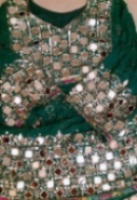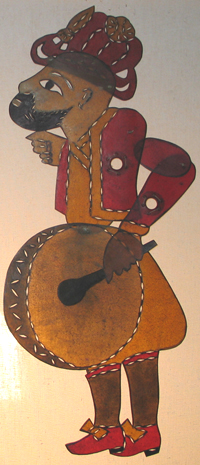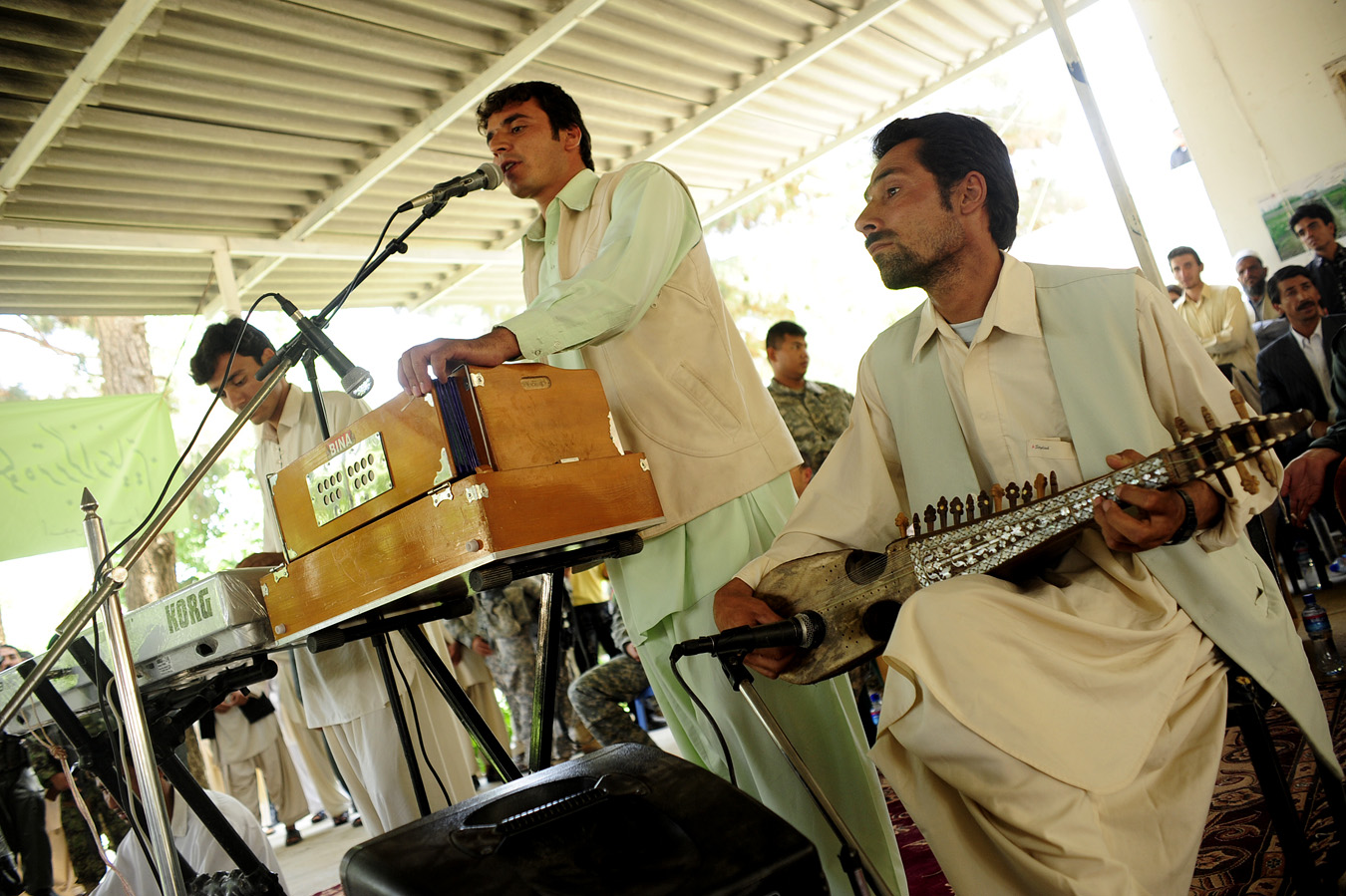|
Dohol
A dohol(Persian:دهل) is a large cylindrical drum with two skinheads. It is generally struck on one side with a wooden stick bowed at the end, and with a large thin stick on the other side, though it is also played with the bare hands. It is the principal accompaniment for the Sorna. A similar instrument, the Dhol, is used in traditional Egyptian, Pakistani and Indian music. The dohol is largely played in Kurdistan with the zurna. In Iran The dohol in Iran is mostly played in wedding ceremonies and other celebrations. The dohol is mostly played with a ''sorna''. In Afghanistan The dohol in Afghanistan is mostly played on special ceremonies such as wedding ceremonies. The "Surnay or Sorna" is mostly played with it. The Afghan dance Attan is traditionally performed with both the Dohol and Surnay. See also * Baluchi music * Caucasian Dhol *Davul *Dhol *Kurdish music *Afghan music The music of Afghanistan comprises many varieties of classical music, folk music, and modern ... [...More Info...] [...Related Items...] OR: [Wikipedia] [Google] [Baidu] |
Dhol
Dhol (IPA: ) can refer to any one of a number of similar types of double-headed drum widely used, with regional variations, throughout the Indian subcontinent. Its range of distribution in India, Bangladesh and Pakistan primarily includes northern areas such as the Punjab, Haryana, Delhi, Kashmir, Sindh, Assam Valley, Uttarakhand, West Bengal, Odisha, Gujarat, Maharashtra, Konkan, Goa, Karnataka, Rajasthan, Bihar, Jharkhand and Uttar Pradesh. The range stretches westward as far as eastern Afghanistan. A related instrument is the dholak or dholki. Someone who plays the dhol is known as ''dholi''. Construction The dhol is a double-sided barrel drum played mostly as an accompanying instrument in regional music forms. In Qawwali music, the term ''dhol'' is used to describe a similar, but smaller drum with a smaller tabla, as a replacement for the left hand tabla drum. The typical sizes of the drum vary slightly from region to region. In Punjab, the dhol remains large and bulky ... [...More Info...] [...Related Items...] OR: [Wikipedia] [Google] [Baidu] |
Cylindrical Drum
Cylindrical drums are a category of drum instruments that include a wide range of implementations, including the bass drum and the Iranian ''dohol''. Cylindrical drums are generally two-headed and straight-sided, and sometimes use a buzzing, percussive string. The Iranian ''dohol'' is a famous form of cylindrical drum. Many music area In anthropology and geography, a cultural region, cultural sphere, cultural area or culture area refers to a geography with one relatively homogeneous human activity or complex of activities (culture). Such activities are often associated ...s nears in the Middle East, North Africa and Central Asia include variations on the dohol and cylindrical drum forms, including the ''dhol'' of Armenia, ''daval'' of Kurdistan and the ''tabl ballady'' of Egypt. Southeastern Europe is home to cylindrical drums like the ''tapan'' of Macedonia and the ''dauli'' of Greece. References * * Drums Directly struck membranophones {{Membranophone-in ... [...More Info...] [...Related Items...] OR: [Wikipedia] [Google] [Baidu] |
Attan
Attan ( ps, اتڼ) is a traditional dance originating from the tribal Pashtun regions of Afghanistan and North Western Pakistan. It is now considered the national dance of Afghanistan. Some believe it has spiritual roots connecting it to Zoroastrianism. Others link the dance to the British occupation and the Pashtun resistance movement, when Pashtuns used the dance to instil confidence and energy among warriors readying to battle the colonisers. The Attan was also conducted by Pashtuns in times of war or during weddings or other celebrations (engagements, weddings and informal gatherings). It is now considered the national dance of Afghanistan, popularly carried by other ethnic groups in Afghanistan as well as by the Pashtun ethnic group in Pakistan. The traditional Attan is a special type of dance performed by a troupe of Pashtun tribesmen who would wave swords (Khattak tribe) or guns (Mehsud tribe) oelr scarves in the air while drummers beat drums. They move around in a pres ... [...More Info...] [...Related Items...] OR: [Wikipedia] [Google] [Baidu] |
Davul
The davul, dhol, tapan, atabal or tabl is a large double-headed drum that is played with mallets. It has many names depending on the country and region. These drums are commonly used in the music of the Middle East and the Balkans. These drums have both a deep bass sound and a thin treble sound due to their construction and playing style, where different heads and sticks are used to produce different sounds on the same drum. Names Some names of davuls include: *''dhol'' ( hy, դհոլ) *''dawola/davola'' ( syr, ܛܲܒܼܠܵܐ) *''dohol'' ( fa, دهل dohol) *''doli'' ( ka, დოლი doli) *''davul'' ( tr, davul, lit=drum) *''dahol'' ( ku, dahol, sdh, Dîweł) *''davil'' ( ta, davil) *''davula'' ( Sinhala: දවුල) *''tupan'' ( Goranian: tupan) *''daul'', ''tǎpan'', ''tupan'' ( bg, тъпан, тупан) *''goč'', ''tapan'', ''tupan'' ( sr, гоч, тапан, тупан) *''tapan, tupan'' ( mk, тапан, тупан) *''tobă/dobă'' ( ro , tobă) *''tabl'' ( ... [...More Info...] [...Related Items...] OR: [Wikipedia] [Google] [Baidu] |
Kurdish Musical Instruments
Kurdish may refer to: *Kurds or Kurdish people *Kurdish languages *Kurdish alphabets *Kurdistan, the land of the Kurdish people which includes: **Southern Kurdistan **Eastern Kurdistan **Northern Kurdistan **Western Kurdistan See also * Kurd (other) *Kurdish literature *Kurdish music *Kurdish rugs *Kurdish cuisine *Kurdish culture *Kurdish nationalism Kurdish nationalism (, ) is a nationalist political movement which asserts that Kurds are a nation and espouses the creation of an independent Kurdistan from Iran, Iraq, Syria and Turkey. Early Kurdish nationalism had its roots in the Ottoman ... {{disambiguation Language and nationality disambiguation pages ... [...More Info...] [...Related Items...] OR: [Wikipedia] [Google] [Baidu] |
Afghan Musical Instruments
Afghan may refer to: *Something of or related to Afghanistan, a country in Southern-Central Asia *Afghans, people or citizens of Afghanistan, typically of any ethnicity **Afghan (ethnonym), the historic term applied strictly to people of the Pashtun ethnicity **Ethnic groups in Afghanistan, people of various ethnicities that are nationally Afghan *Afghan Hound, a dog breed originating in the mountainous regions of Afghanistan and the surrounding regions of Central Asia *Afghan (blanket) *Afghan coat *Afghan cuisine People * Sediq Afghan (born 1958), Afghan philosopher * Asghar Afghan (born 1987), former Afghan cricketer * Afgansyah Reza (born 1989), Indonesian musician also known as "Afgan" * Afghan Muhammad (died 1648), Afghan khan in modern day Russia * Azad Khan Afghan (died 1781), Afghan Commander and Ruler Places * Afghan, Iran, a village in Sistan and Baluchestan Province, Iran Other uses * Afghan (Australia), camel drivers from Afghanistan and Pakistan who came to the Au ... [...More Info...] [...Related Items...] OR: [Wikipedia] [Google] [Baidu] |
Directly Struck Membranophones
Directly struck membranophones is one of the sub-categories of musical instruments found in the Hornbostel-Sachs system of musical instrument classification. The type of membranophones or drums found in this group are those instruments that produce sound when struck directly by the performer. The membrane of these drums is hit with a stick, the hand, or something else. Drums that produce sound by means of plucking an attached string or by means of friction are grouped in a different category. 211.1 Instruments in which the body of the drum is dish- or bowl-shaped (kettle drums) 211.11 Single instruments 211.12 Sets of instruments 211.2 Instruments in which the body is tubular ( tubular drums) 211.21 Instruments in which the body has the same diameter at the middle and end (cylindrical drums) 211.211 Instruments which have only one usable membrane 211.211.1 Instruments in which the end without a membrane is open 211.211.2 Instruments in which the end without a membrane is c ... [...More Info...] [...Related Items...] OR: [Wikipedia] [Google] [Baidu] |
Drums
A drum kit (also called a drum set, trap set, or simply drums) is a collection of drums, cymbals, and other Percussion instrument, auxiliary percussion instruments set up to be played by one person. The player (drummer) typically holds a pair of matching Drum stick, drumsticks, one in each hand, and uses their feet to operate a foot-controlled hi-hat and bass drum pedal. A standard kit may contain: * A snare drum, mounted on a snare drum stand, stand * A bass drum, played with a percussion mallet, beater moved by a foot-operated pedal * One or more Tom drum, tom-toms, including Rack tom, rack toms and/or floor tom, floor toms * One or more Cymbal, cymbals, including a ride cymbal and crash cymbal * Hi-hat cymbals, a pair of cymbals that can be manipulated by a foot-operated pedal The drum kit is a part of the standard rhythm section and is used in many types of popular and traditional music styles, ranging from rock music, rock and pop music, pop to blues and jazz. __TOC__ ... [...More Info...] [...Related Items...] OR: [Wikipedia] [Google] [Baidu] |
Afghan Music
The music of Afghanistan comprises many varieties of classical music, folk music, and modern popular music. Afghanistan has a rich musical heritage and features a mix of Persian melodies, Indian compositional principles, and sounds from ethnic groups such as the Pashtuns, Tajiks and Hazaras. Instruments used range from Indian tablas to long-necked lutes. Afghanistan's classical music is closely related to Hindustani classical music while sourcing much of its lyrics directly from classical Persian poetry such as Mawlana Balkhi (Rumi) and the Iranian tradition indigenous to central Asia. Lyrics throughout most of Afghanistan are typically in Dari (Persian) and Pashto. The multi-ethnic city of Kabul has long been the regional cultural capital, but outsiders have tended to focus on the city of Herat, which is home to traditions more closely related to Iranian music than in the rest of the country.Doubleday, pg. 4 History Folk and traditional music Religious music The Afghan ... [...More Info...] [...Related Items...] OR: [Wikipedia] [Google] [Baidu] |
Kurdish Music
Kurdish music refers to music performed in the Kurdish languages and Zaza-Gorani languages. The earliest study of Kurdish music was initiated by the renowned Armenian priest and composer Komitas in 1903, when he published his work ''" Chansons kurdes transcrites par le pere Komitas"'' which consisted of twelve Kurdish melodies which he had collected. The Armenian Karapetê Xaço also preserved many traditional Kurdish melodies throughout the 20th century by recording and performing them. In 1909, Scholar Isya Joseph published the work "''Yezidi works''" in which he documented the musical practice of the Yazidis including the role of the musician-like qawâl figures and the instruments used by the minority. Kurdish music appeared in phonographs in the late 1920s, when music companies in Baghdad began recording songs performed by Kurdish artists. Despite being secondary to vocals, Kurds use many instruments in traditional music. Musical instruments include the tembûr (see kurdish ... [...More Info...] [...Related Items...] OR: [Wikipedia] [Google] [Baidu] |
Balochi Music
The Baloch or Baluch ( bal, بلۏچ, Balòc) are an Iranian people who live mainly in the Balochistan region, located at the southeasternmost edge of the Iranian plateau, encompassing the countries of Pakistan, Iran, and Afghanistan. There are also Baloch diaspora communities in neighbouring regions, including in India, Turkmenistan, and the Arabian Peninsula. The Baloch people mainly speak Balochi, a Northwestern Iranian language, despite their contrasting location on the southeastern side of the Persosphere. The majority of Baloch reside within Pakistan. About 50% of the total ethnic Baloch population live in the Pakistani province of Balochistan, while 40% are settled in Sindh and a significant albeit smaller number reside in Pakistani Punjab. They make up nearly 3.6% of Pakistan's total population, and around 2% of the populations of both Iran and Afghanistan. Etymology The exact origin of the word 'Baloch' is unclear. * Rawlinson (1873) believed that it is derived f ... [...More Info...] [...Related Items...] OR: [Wikipedia] [Google] [Baidu] |







